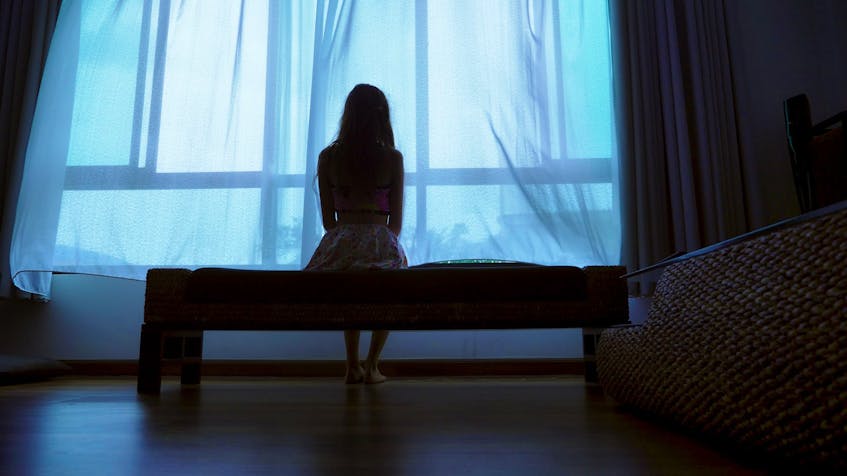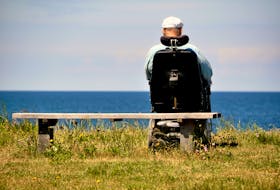ST. JOHN'S, N.L. — It might be the scent of a particular cologne that sets a person off. Maybe it’s the feel of a certain type of carpet underfoot or the smell of a particular flavour of ice cream.
Many times, the person isn’t sure why the thing strikes them with panic or makes them feel uncomfortable; it just does. It’s in their brain, a part of their neurology, and it’s a result of childhood trauma.
That trauma, in the case of children living in a home with intimate-partner violence, can come from something they’ve witnessed, even if they weren’t the direct victim.
“A lot of people don’t even realize that they are suffering the effects of having witnessed that kind of violence. They may react to things that remind them of the violence, but don’t have any insight into why they’re reacting,” says Lynn Moore, a St. John’s-based lawyer who works in the area of child abuse.
Moore is also chairwoman of the board of directors for Iris Kirby House, a facility offering shelter and supports to women and children fleeing violent home situations.
“A lot of my clients are people in their 40s and 50s who are only beginning to unpack, why they get panic-stricken when they smell that cologne, or why they feel panic-stricken when they see blueberry ice cream. They may have known that they were avoiding blueberry ice cream for 35 years, but never really figured out that was something that reminds them of what happened to them as a child.”
The effects of intimate-partner violence on a partner have long been studied and known: survivors — who are mainly women, according to Statistics Canada numbers — often face enduring emotional and psychological impacts, even after recovering from the physical trauma. Depression, anxiety, low self-esteem, addiction issues, eating disorders and post-traumatic stress disorder are common, as are trust issues. Healing can take time and plenty of support.
Less has been written about the impact of intimate-partner violence on children who witness it.
“Some of the biggest victims of domestic violence are the smallest,” UNICEF wrote in a 2006 report called “Behind Closed Doors: The Impact of Violence on Children.” Children who grow up in a violent home but are not direct victims have some of the same behavioural and psychological effects as children who are abused, the report stated.
“Children in the earliest years of life are particularly vulnerable: studies show that domestic violence is more prevalent in homes with younger children than those with older children,” the report stated.
Changes children's brains
Statistics Canada numbers from 2014 indicate one in 10 Canadians reported witnessing, as a child under 15, violence by a parent or guardian against another adult in the home.
Anxiety, depression and post-traumatic stress are common effects in children, as are aggression, difficulty concentrating in school, social challenges, headaches and insomnia.
The changes in a child’s brain are visible on MRI tests, researchers have found, with some studies reporting jarring results and proof that the effects are more than just short-term symptoms. In 2011, University College London scientists found that children who had been exposed to family violence exhibited the same type of increased brain activity as soldiers exposed to combat.
From a policing perspective, early childhood trauma is something frontline officers take very seriously, says Const. Lindsay Dillon of the Royal Newfoundland Constabulary’s intimate-partner violence unit. The first priority when responding to a report of violence in a home is to ensure all occupants are safe, she says, and the second priority is supporting them.
“Safety is our Number 1 concern, and exposing the child to as little as possible.” — Const. Lindsay Dillon, RNC
“The first thing we do is try and get (the abuser) out of the home as quickly as possible,” Dillon says. “Safety is our Number 1 concern, and exposing the child to as little as possible.”
That can mean bringing them to a different room as one of their parents is handcuffed and taken into custody. If police are able to establish safety for the child with the protective parent once the accused is arrested, they will provide resources, alerting child-protection workers with the Department of Children, Seniors and Social Development (CSSD). In severe cases, CSSD social workers will attend the scene and remove the children on the spot to protect them. That in itself can prove traumatic for a child.
RNC officers with the intimate-partner violence unit will follow up with the victim, Dillon says, discussing a safety plan for themselves and their children, ensuring access to resources and liaising with the courts to provide updates.
Frontline officers receive sensitivity training and other specific education when it comes to dealing with victims of intimate-partner violence — both the adult and child victims — but it’s often impossible to be hardened to the aftermath of those types of calls.
“A lot of the frontline officers are parents,” Dillon says. “It’s sometimes difficult to shut off the heart in those situations.”
Contact the Kids Help Phone for support: 1-800-668-6868
There’s evidence to suggest the cycle of violence often continues, with children growing up to become offenders or victims themselves. It’s something Dillon has personally witnessed.
“I’ve got 16 years in this job and it absolutely has happened,” she says. “I’ve seen service requests in our system where I’ve recognized a name and then realized, oh yeah, they were involved in a call with mom and dad. Every child is different, but it’s a learned behaviour. If they grow up in a house with violence, it’s all they know. The trauma is normalized.”
About half of the inmates in Canada had experienced childhood abuse in a range of forms, a study out of McMaster University revealed two years ago, analyzing data from 30 years of research into Canadian prisons. It’s a common issue addressed in the criminal courts, often taken into consideration as a mitigating factor upon sentencing — as an explanation, not an excuse.
Many women in violent intimate relationships report having grown up in a home where it was all they knew, Moore says.
The solution, she says, comes down to early education, both in terms of ending the cycle of violence and helping children to speak up about what they may be experiencing at home.
“I really believe that this is a gendered crime, one that sees men as abusers and women as victims most of the time,” she says. “I think that respect and gender dynamics and equality should be part of our core subjects from grades K-12. A problem well-defined is a problem half solved, so if we start teaching our children about gender disparity and inequity then those children are going to grow up and create a world where we see a lot less of those things.”
In the meantime, Moore says, more supports for survivors and offenders would go a long way.
“A lot of women love the abuser but hate the abuse, and a lot men are like that, too — they don’t want to be that way. The more supports we can provide them, the more we can undo what’s going on now.”
Twitter: @tara_bradbury









